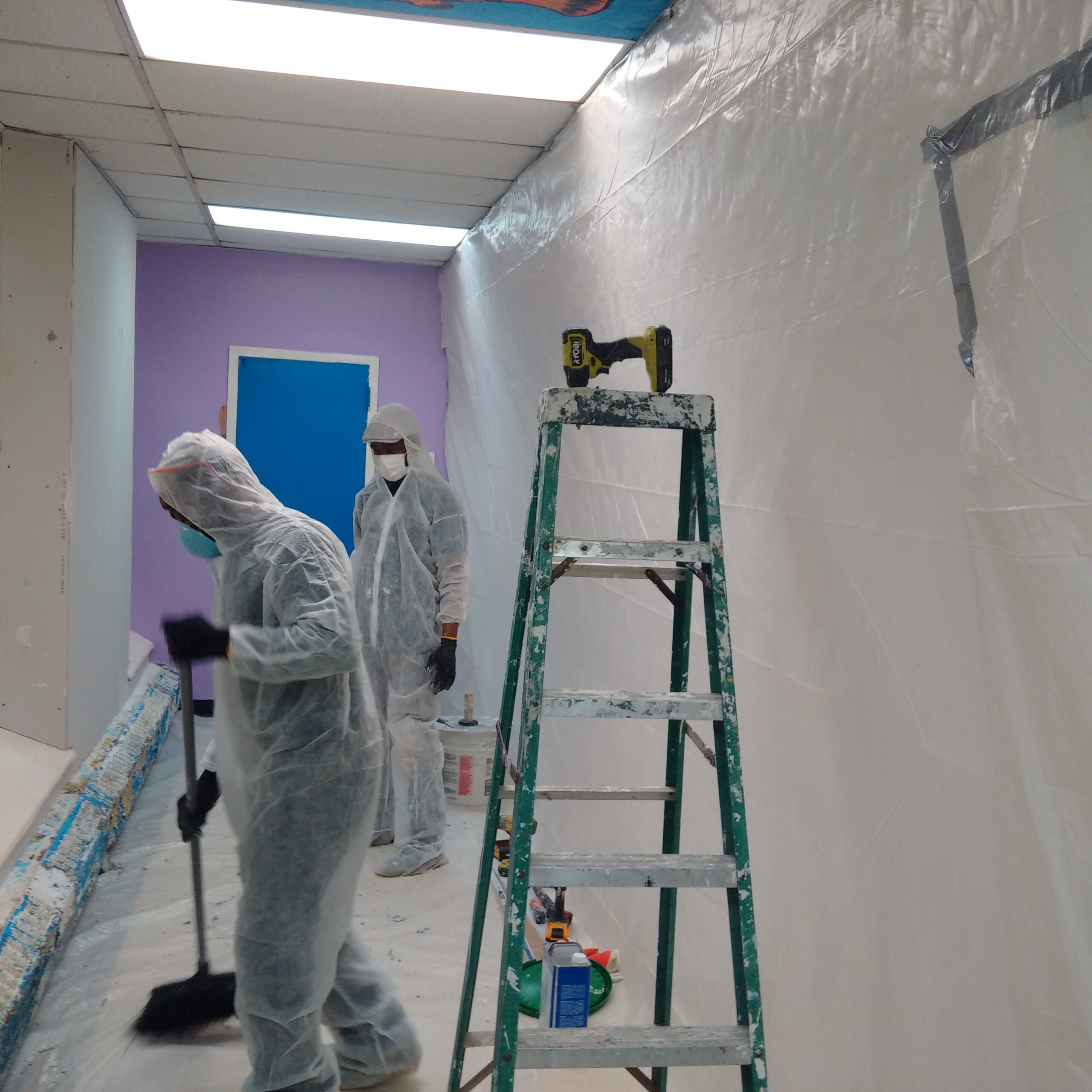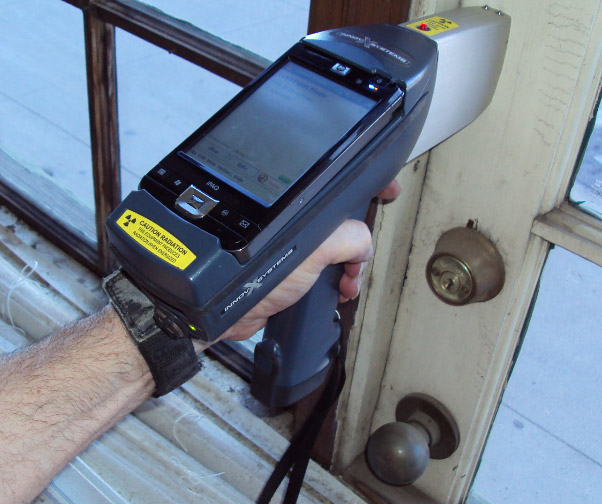NYC Lead Removal Contractors-- Obtain Safe and Efficient Providers
NYC Lead Removal Contractors-- Obtain Safe and Efficient Providers
Blog Article
Necessary Tools and Methods for Effective Lead Violation Cleaning
Addressing lead infractions properly necessitates a detailed method that blends the right devices with strategic techniques. Concurrently, the use of specialized cleaning tools, such as HEPA vacuums and lead-specific cleaning representatives, is necessary for complete pollutant elimination. Effective control approaches, including plastic sheeting and negative air pressure systems, are essential to stop the spread of harmful products.
Individual Protective Tools
Individual protective equipment (PPE) is a crucial element in the reliable monitoring of lead contamination cleanup. PPE functions as an essential obstacle, securing employees from the hazardous effects of lead direct exposure, which can result in extreme wellness consequences. The necessary PPE for lead cleanup includes respirators, protective clothes, gloves, and eye security. Each kind of equipment is particularly developed to mitigate different risks related to lead particles and dust.
Respirators, especially those furnished with HEPA filters, are crucial for filtering system airborne lead particles, preventing breathing. Proper fit and seal checks are vital to ensure their performance. Safety clothes, consisting of coveralls and non reusable matches, protects against lead dust from adhering to employees' garments, lowering the risk of additional contamination. Handwear covers, generally made from nitrile or latex, secure the skin from straight contact with lead, while safety goggles or full-face guards safeguard the eyes from dirt and particles.
Additionally, rigorous training on the correct use and maintenance of PPE is crucial. Workers should be educated on wearing and doffing treatments to prevent contamination. Routine inspections and replacements of PPE parts are required to preserve their protective abilities, ensuring a safe and certified clean-up procedure.
Specialized Cleanup Equipment

Another vital device is the wet/dry vacuum, which can properly cleanse up both dirt and liquid contaminants. These vacuum cleaners typically include HEPA filters to offer an extra layer of safety. Wet wipes or tack cloths are additionally crucial for surface area cleansing; they are specifically created to capture and hold lead fragments, reducing the risk of spreading out contamination.
For even more persistent deposits, specialized lead-removal cleaner are called for. These representatives are created to break down lead fragments, making them much easier to get rid of. Scrub brushes with strong bristles can assist in this procedure, particularly on rough surfaces where lead dirt has a tendency to adhere more highly.
Furthermore, encapsulants are utilized to secure lead-contaminated surfaces, stopping the launch of lead dust. These specialized paints and layers are developed to stick to numerous substratums, supplying a lasting service for lead control.
Efficient Control Approaches
Efficient containment techniques are critical in reducing the spread of lead contamination throughout clean-up tasks. Applying robust control techniques ensures that lead fragments do not move to unaffected locations, therefore shielding both workers and the setting (DOH & HPD Lead Violation Removal NYC).

To improve control, encapsulants can be put on surfaces that are not being removed or disrupted. These specialized coverings bind lead dirt, decreasing its schedule for resuspension. Furthermore, all employees have to put on ideal Individual Safety Tools (PPE), including respirators and disposable fits, to avoid contamination spread.
Safe Disposal Practices
Making certain safe disposal practices is an important component in the management of lead contamination cleaning. Correct disposal mitigates the threat of lead returning to the environment and threatening public wellness. The first action is to recognize and segregate lead-contaminated waste from other products. Secure control making use of sturdy, leak-proof containers is necessary to stop spillage during transportation.
Transferring lead waste needs adherence to strict guidelines. Making use of accredited contaminated materials providers makes sure that the materials are managed responsibly. Paperwork, including shows up outlining More Info the kind and quantity of waste, must go along with shipments to track the waste from the site of origin to its last disposal location.
Designated contaminated materials disposal facilities are outfitted to take care of lead-contaminated materials securely. her latest blog These facilities usually utilize advanced approaches such as stabilization, solidification, or chemical therapy to neutralize the lead before disposal. Landfilling in specialized, lined locations that avoid leachate from contaminating groundwater is an usual method for final disposal.
Routine training for employees entailed in lead garbage disposal is essential to keep safety and security standards and stop unintentional exposure. By adhering to these practices, companies can considerably minimize the environmental and wellness influences associated with lead contamination.
Regulatory Compliance Tips

Sticking to governing conformity is paramount in the successful execution of lead contamination cleanup. Understanding and following government, state, and regional regulations ensures not just the safety and security and health and wellness of people but also the lawful and economic wellness of the cleanup company. The Environmental Defense Agency (EPA) establishes go to these guys strict criteria, such as the Lead Renovation, Repair Service, and Paint (RRP) Guideline, which mandates appropriate accreditation and training for contractors managing lead-based tasks.
Compliance begins with a comprehensive analysis of relevant legislations and regulations. Organizations has to stay upgraded on any legislative changes, which can be assisted in with regular training sessions and subscribing to industry updates. Paperwork is another critical compliance element; preserving comprehensive records of all activities, including evaluation records, worker training logs, and disposal materializes, is important.
In addition, engaging with certified lead inspectors or take the chance of assessors makes sure that lead hazards are correctly identified and reduced. Employers need to enforce the usage of Personal Protective Devices (PPE) and make sure that security procedures are purely followed. Finally, transparent interaction with stakeholders, consisting of workers, customers, and regulatory bodies, will promote a society of conformity and responsibility, ultimately adding to a much safer and much more efficient lead cleanup process.
Conclusion
Effective lead infraction cleanup requires the integration of specialized tools and strategic methodologies to make certain security and efficacy. Using HEPA vacuum cleaners, specialized cleaning agents, and efficient containment approaches such as plastic sheeting and adverse atmospheric pressure systems is imperative. Individual safety tools (PPE) safeguards employees from direct exposure, while secure disposal methods and strict adherence to regulative conformity are necessary for properly handling contaminated materials. Jointly, these measures substantially reduce health and wellness risks and add to a cleaner atmosphere.
Report this page